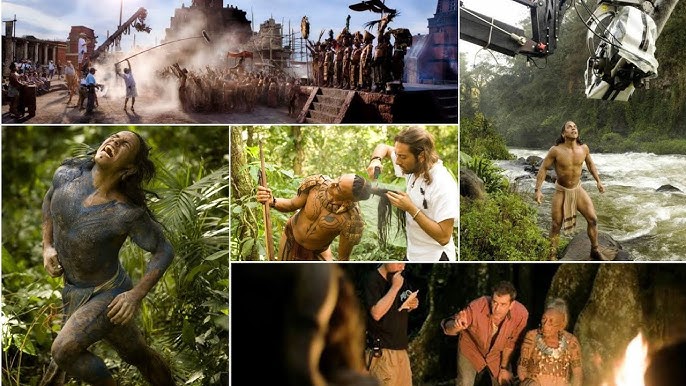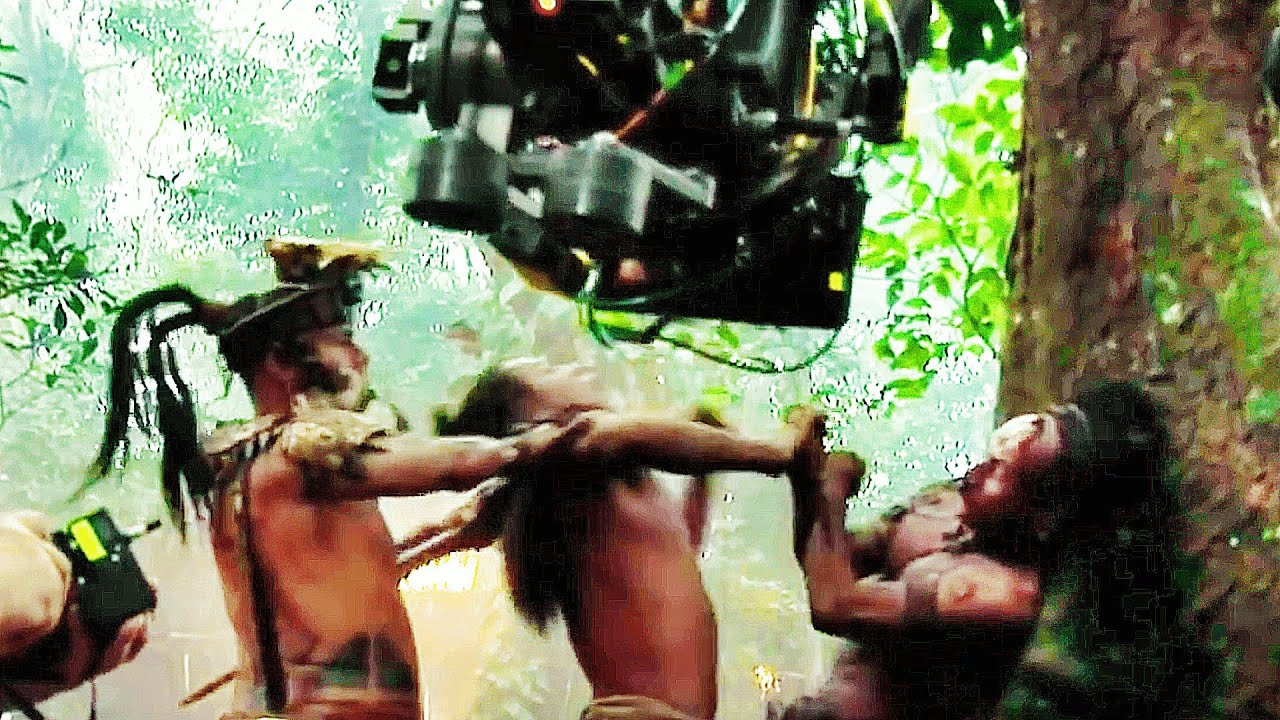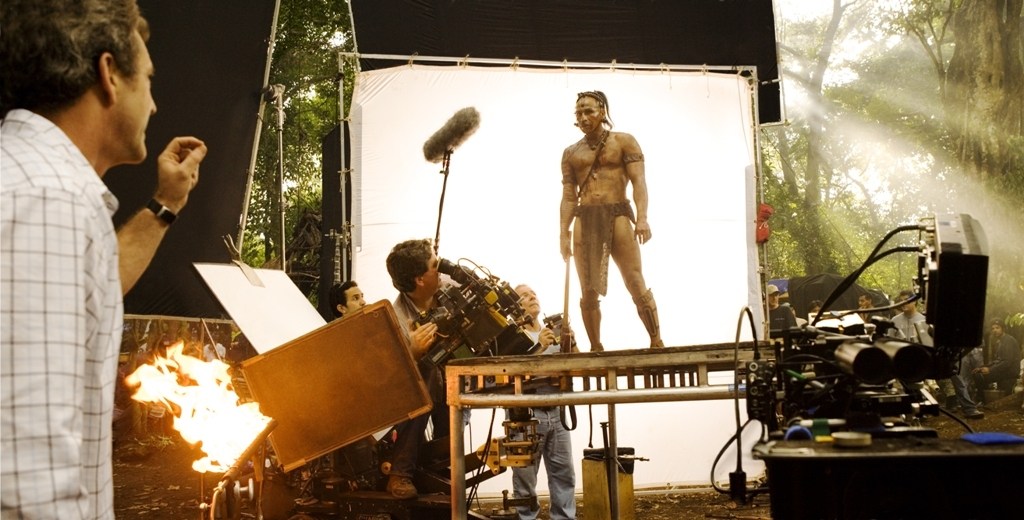Behind the scenes of Apocalypto 2

Related Movies:
Related Movies:
Related Movies:
Behind the Scenes of Apocalypto 2 (2025)
Apocalypto 2 (2025) is the highly anticipated sequel to the 2006 film Apocalypto, directed by Mel Gibson. The original film was renowned for its intense and gritty portrayal of the Mayan civilization during the decline of the Mesoamerican period, with stunning cinematography and an immersive story. The sequel follows in the same vein, but it expands on the story and the cultural backdrop, bringing the ancient world to life in even more vivid detail.
Here’s a closer look at the making of Apocalypto 2 and the behind-the-scenes elements that brought this thrilling and visually arresting story to life:
1. Direction and Vision
-
Mel Gibson returns as the director, bringing his distinct vision for historical epics and intense drama to the sequel. Gibson, known for his meticulous attention to detail and immersive world-building, set out to make Apocalypto 2 even more ambitious than its predecessor.
-
The film expands on the legacy of the original Apocalypto, continuing the story of Jaguar Paw (played by Rudy Youngblood) and his tribe, now in a time of transition as they face new external threats. While the first film focused on the individual survival of Jaguar Paw, the sequel takes a broader look at the changing Mesoamerican landscape during the post-classic period.
2. Setting and Locations
-
Filming Locations: The production team chose remote, lush locations in the dense jungles of Mexico, particularly around the Yucatán Peninsula. The location selection was crucial to recreate the natural world of the ancient Mesoamerican culture in all its raw beauty. The jungle’s expansive terrain, along with nearby ruins, helps convey the overwhelming and unforgiving environment that the characters must navigate.
-
For certain large-scale scenes, including battle sequences and ceremonial rituals, CGI was used sparingly to augment the natural environment. The filmmakers worked closely with local indigenous groups to ensure authenticity in portraying their environment and cultural rituals.

3. Cultural Accuracy and Research
-
One of the key aspects of Apocalypto was its commitment to cultural authenticity, and Apocalypto 2 takes that even further. The filmmakers spent extensive time consulting with historians, archaeologists, and indigenous consultants to ensure that the customs, rituals, and artifacts were portrayed with historical accuracy.
-
The production team went to great lengths to accurately depict the Mayan language, which is a key aspect of the film’s authenticity. The dialogue in Apocalypto 2 remains in Yucatec Maya, with no subtitles, allowing the actors to deliver their lines in a way that stays true to the original film’s linguistic choice.
-
The filmmakers also delved deep into Mayan history, exploring the collapse of the Maya civilization, which provides the backdrop for the narrative. The rise of external forces—such as encroaching tribal groups and the arrival of Europeans—will play a significant role in the story, building on the tension of societal collapse.
4. Casting and Performances
-
Rudy Youngblood returns as Jaguar Paw, the protagonist from the original film. His character, now much older, has survived the violence of the first film, but his new journey is far from over. The film explores the evolution of Jaguar Paw from a survivor to a leader as he faces an even more daunting threat. Youngblood’s return to the role was essential for maintaining continuity with the first film’s themes of survival and heroism.
-
The cast also includes new characters, each representing a different tribe or faction in this post-Mayan world. The introduction of new, complex characters adds richness to the narrative, allowing for deeper explorations of the social dynamics during a time of great change.
-
Indigenous actors were once again cast in key roles, ensuring that the performances remained authentic and grounded in the cultural context. The connection between the actors and their roles was crucial to the emotional intensity that Apocalypto 2 is known for.

5. Costume and Makeup
-
The costume design in Apocalypto 2 was integral to recreating the Maya civilization. The team worked with local artisans and textile experts to replicate traditional Mayan clothing, jewelry, and war gear. The clothing reflects the period’s use of materials like cotton, feathers, and jade, which were symbolic of power and status.
-
Makeup and prosthetics were also a major part of the production, particularly for the more gruesome and intense scenes. Detailed prosthetics were used to create realistic wounds and injuries, as well as the impressive visual effects seen in the tribal warfare scenes. Special makeup was also employed for the skull and face paint used during ritualistic ceremonies and battle, highlighting the ritualistic and spiritual aspects of the culture.
6. Cinematography and Action Sequences
-
The cinematography of Apocalypto 2 continues the tradition of breathtaking visuals and intense, immersive action. The film’s DP (Director of Photography) worked with Gibson to create long, sweeping shots of the jungle, capturing its beauty and danger in equal measure. The jungle setting, with its dense foliage and oppressive heat, is treated as a character in its own right—just as important as the human characters.
-
Action sequences are an integral part of the film’s narrative, especially the battle scenes that occur between rival tribes. The filmmakers wanted these sequences to be as visceral as possible, so they used practical effects for stunts, including hand-to-hand combat, archery, and chases through the jungle. The raw, unflinching depiction of violence highlights the brutal survival instincts of the characters.
-
The choreography for the action scenes was developed in close collaboration with stunt coordinators and fight choreographers who specialized in ancient combat techniques, such as the Mesoamerican spear fighting and hand-to-hand brawls. The intense, chaotic nature of the battles reflects the larger political collapse and the struggle for dominance between tribal factions.
7. Post-Production and Visual Effects
-
Visual effects (VFX) played a significant role in bringing the ancient world to life. The filmmakers used CGI sparingly, focusing on enhancing the natural environment and the more mystical elements of the story. For instance, scenes involving massive natural disasters, such as volcanic eruptions or floods, were enhanced with visual effects to add a layer of tension and chaos.
-
The color palette of Apocalypto 2 was designed to evoke the heat and intensity of the jungle while contrasting the deep, dark nature of the human conflict. Earthy tones dominate the film’s aesthetic, with the rich greens of the jungle offset by the darker colors of war and destruction.

8. Sound and Music
-
The music for Apocalypto 2 is composed by James Horner (who composed the first film’s score before his passing). The sequel continues the tradition of using traditional instruments and tribal rhythms, combined with a haunting, emotional score to reflect the film’s epic scope. The music plays an essential role in building tension and creating an atmosphere that is both spiritual and visceral.
-
Sound design plays a huge part in Apocalypto 2 as well. The natural sounds of the jungle, the roar of animals, and the clash of weapons are meticulously crafted to heighten the realism and intensity of the film’s action scenes.
9. Cultural Consultation and Authenticity
-
As with the first film, the production team consulted with indigenous historians, cultural advisors, and archaeologists to ensure that the depiction of Maya culture in Apocalypto 2 was as authentic as possible. These consultants helped guide the filmmakers in portraying accurate cultural rituals, architecture, and lifestyle practices.










